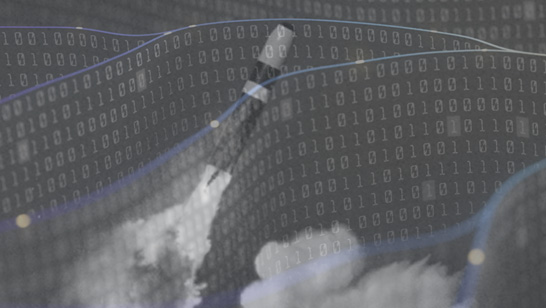
With global electricity demand set to double by 2040 and climate resilience on the top of the worldwide policy agenda, alongside the growing weaponisation of energy supplies, decentralised and clean energy production is increasingly a necessity for national and international security. Under these circumstances, nuclear energy is increasingly seen as a sustainable option. To further complicate the interplay between national and energy security, the majority of active nuclear plants, especially in Eastern Europe, will need to be replaced by 2040, and more novel nuclear material value chains are still yet to be developed. This means that Europe is facing a new era of risk and uncertainty regarding nuclear security.
These trends have heightened not only the risk of nuclear materials being used as weapons by terrorist groups and insurgencies, but also the risk of nuclear materials being used in hybrid warfare. For instance, there was a recent incident in Libya where the International Atomic Energy Agency (IAEA) was unable to verify media reports detailing the loss and subsequent discovery of uranium supplies. This caused a great degree of anxiety and uncertainty amongst governments and international organisations. It demonstrated how state and non-state actors can manipulate information on hypothetical or actual cases of nuclear materials going missing, or being used in conflicts, to cause panic in civilian populations. In turn, this has the effect of undermining public trust in the safety of the peaceful use of nuclear power.
The existing institutional framework and the operational capacity for prevention, early detection, and mitigation of such hybrid nuclear incidents are limited both on the EU and national level. Nicholas Moulios
The existing institutional framework and the operational capacity for prevention, early detection, and mitigation of such hybrid nuclear incidents are limited both on the EU and national level. Meanwhile, the distribution of information (or misinformation and disinformation) on nuclear issues is continuously growing in mainstream social media and peer-to-peer (P2P) networks. For example, many videos were circulated on social media regarding the previously mentioned Libyan example whilst authorities were still investigating initial reports of the incident.
As a result, the EU and other partners, such as NATO, need to establish a cohesive Open Source Intelligence (OSINT) investigation strategy to monitor nuclear energy infrastructure. This should include the development of developing a nuclear information security incident response team that can – collectively and in real-time – protect member states from nuclear information hazards and disinformation operations that target nuclear infrastructure or related projects.
The development of a dedicated monitoring mechanism based on Open Source Intelligence, and with the support of the existing EU Nuclear Security capacity, may assist in the detection and analysis of nuclear disinformation incidents, as well as physical incidents. It could also help to prevent cyberattacks in critical mission systems, providing threat intelligence support to the relevant cyber defence authorities. The proposed mechanism would offer continuous monitoring and tactical analysis of the information domain dedicated to the early detection of nuclear information incidents. This is critical for the timely breaking of complex, cyber-physical chains nuclear against civilian nuclear targets or nuclear material supply chains, which involve information and cyber aspects.
The development of a dedicated monitoring mechanism based on Open Source Intelligence, and with the support of the existing EU Nuclear Security capacity, may assist in the detection and analysis of nuclear disinformation incidents, as well as physical incidents. Nicholas Moulios
Nuclear energy is a potential cause of catastrophic risks to humanity. As a result, innovative approaches to its safeguarding, based on OSINT methodologies, tools, and practices, would be highly valuable for the EU’s nuclear security and its decision-making on other issues that could similarly lead to existential threats. Based on openly available data, remote analysis of nuclear infrastructures allows the modelling and simulation of the consequences of radiological or nuclear events in hostile areas due to war, conflict, or natural and technological hazards. It also allows modelling and simulation in cases of suspicious activity or information regarding nuclear incidents in non-cooperative states, which deny international inspectors access for political reasons. This function would provide vital, previously unknown, intelligence to improve the EU’s ability to protect its member states and the wider world from harm.
Furthermore, except for its core strategic role, OSINT integration in EU nuclear security activities may contribute in other ways to global nuclear security. For example, the nuclear and radiological incident response is emergency by nature, to minimise the risk of evidence loss and mitigate the incident’s impact. In those cases, the digital analysis of places and movements decreases the time needed for operational planning while preserving critical evidence, which could be valuable in “post-mortem” forensic investigations.
As the output of a single investigation may be used in several substantially overlapped institutional frameworks, the nuclear-open-source investigations cell may provide a unique global leadership opportunity and set a framework of standardised operating procedures and guidelines in the spirit of those frameworks. As a product of this dedicated function, the standardisation of OSINT use on investigations in a nuclear context, focused on incident response-oriented assistance and information hazards monitoring, may provide a strategic advantage in this sensitive security area. In order to achieve that, it is recommended that the development of a framework, in the spirit of the Berkeley Protocol, be adapted to the nuclear security requirements and the EU Law.
As the output of a single investigation may be used in several substantially overlapped institutional frameworks, the nuclear-open-source investigations cell may provide a unique global leadership opportunity and set a framework of standardised operating procedures and guidelines in the spirit of those frameworks. Nicholas Moulios
Regarding the collection capacity of the proposed function, the analysis of nuclear infrastructure and material flows usually includes a combination of Geospatial Intelligence (GEOINT), Measurement and Signature Intelligence (MASINT), virtually collected Human Intelligence (HUMINT), and Web Intelligence (WEBINT) from publicly available sources, mainly for framework intelligence, verification, and supporting information. Because of the aforementioned complexity and fragmentation of information sources, forensic protocols should be considered in all collection plans, including identifiers placing, hashing, and other information integrity preservation methodologies. Moreover, the Security Operation Centres-inspired 24/7 monitoring of publicly available information in cyberspace regarding civilian nuclear infrastructure, nuclear material supply chains, strategic exports, and dual-use items, would be an integrated part of the proposed mechanism as it would provide actionable early-warning intelligence.
As a result, developing the described independent Nuclear Intelligence Cell within the EU Intelligence and Situation Centre is the optimum way to provide the European Commission leadership and the member states with actionable intelligence products and even prevent nuclear and radiological incidents. In parallel, the same function, via the continuous digital landscape assessment, could provide the Commission’s leadership, expert bodies and member states with strategic analysis products useful for policymaking, protective intelligence and the safeguarding of critical infrastructures across the Union and its periphery, as well as its planning of support and assistance missions globally. Moreover, the due course standardisation and codification of the applied procedures by this dedicated Cell may create a virtuous cycle of feedback and capacity building in both OSINT utilisation and in the Union’s Common Security & Defence Policy activities. This would significantly strengthen the Union’s nuclear security capacity.
The opinions articulated above represent the views of the author(s) and do not necessarily reflect the position of the European Leadership Network or any of its members. The ELN’s aim is to encourage debates that will help develop Europe’s capacity to address the pressing foreign, defence, and security policy challenges of our time.
Image credit: Microsoft Bing Image Creator



